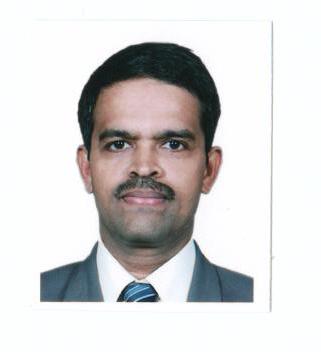| Course Status : | Completed |
| Course Type : | Elective |
| Language for course content : | English |
| Duration : | 12 weeks |
| Category : |
|
| Credit Points : | 3 |
| Level : | Postgraduate |
| Start Date : | 24 Jan 2022 |
| End Date : | 15 Apr 2022 |
| Enrollment Ends : | 07 Feb 2022 |
| Exam Date : | 23 Apr 2022 IST |
Note: This exam date is subject to change based on seat availability. You can check final exam date on your hall ticket.
Text books
Research papers for
additional reading
1. Anagnostopoulos,
S.A. 1982. Dynamic Response of Offshore Structures to Extreme Waves including
Fluid - Structure Interaction. Engr. Structures, 4: 179-185.
2.
Arvid
Naess and Torgeir Moan. 2013. Stochastic dynamics of Marine structures,
Cambridge University Press, NY.
3.
ASTM
E119-88. 1988. Standard test methods for fire tests of building construction
and materials, American Society for Testing and Materials, ASTM E119-88.
4.
Attorney.
2016. Oil Rig Explosion,
http://www.oilrigexplosionattorneys.com/Oil-Rig-Explosions/History-of-Offshore-Accidents.aspx,
Accessed December 2016.
5.
Babrauskas,
V. and Grayson, S.J eds.1992. Heat Resease in Fires, Elsevier Applied Science.
6.
BS6235.
1982. Code of Practice for Fixed Offshore Structures: British Standards
Institution, London.
7.
Chandrasekaran
S., Senger Mayank, Arvind Jain. 2015b. Dynamic response behavior of stiffened
triceratops under regular waves: Experimental investigations, Proc. of 34th
Int. Conf. on Ocean, Offshore and Arctic Engineering (OMAE 2015), St. John's,
NL, Canada, May 31-June 5, 2015. OMAE2015-41376.
8.
Chandrasekaran
Srinivasan and Merin Thomas. 2016. Suppression system for offshore cylinders
under vortex induced vibration, Vibroengineering Procedia, 7:01-06.
9.
Chandrasekaran,
S. and Jamshed Nassery. 2017. Nonlinear response of stiffened triceratops under
impact and non-impact waves, International Journal of Ocean Systems
Engineering, 7(3):179-193. DOI: 10.12989/ose.2017.7.3.179.
10.
Chandrasekaran,
S. and Jamshed Nassery. 2017. Ringing response of offshore triceratops, J.
Innovative Infrastructure Solutions, Springer, DOI: 10.1007/s41062-017-0092-5.
11.
Cheng,
F.P., Kodur, V.K.R. and Wang, T.C. 2004. Stress-strain curves for high strength
concrete at elevated temperature, ASCE J of Materials Engrg., 16(1):84-90.
12.
Graff,
W.J. 1981. Introduction to offshore structures: Design, fabrication and
installation: Gulf Publishing Co, Tokyo.
13.
Hall,
Jr., J. R. 2011. Fatal effects of fire. Quincy : National Fire Protection
Association, Fire Analysis and Research Division.
14.
Kim,
H.-J. and Lilley, D.G. 2000. Heat release rates of burning items in fire, Proc.
of 38th Aerospace Scienes Meeting & Exhibit.
15.
Kodur,
V.K.R. 2000. Spalling in high strength concrete exposed to fire: Concerns,
causes, critical parameters and cures, In Proc.
ASCE Structures Congress, Philadelphia.
16.
Kodur,
V.K.R. 2005. Guidelines for fire resistance design of high strength concrete columns,
J of Fire Protection Engrg., 15(2):93-106.
17.
Kodur,
V.K.R. and Lie, T.T. 1997. Fire resistance of Fibre-reinforced concrete:
Present and future, Canadian Society of Civil Engineers, Montreal
18.
Kodur,
V.K.R., T.T.Lie. 1997. Evaluation of fire resistance of rectangular steel
columns filled with fibre-reinforced concrete, Canadian J. of Civil Engg.,
24(3).
19.
Majumdar,
P. and Marchertas, A. 1997. Heat moisture transport and induced stresses in
porous materials under rapid heating, Numeric heat transfer A, 32:111-130.
20.
Malhotra,
H.L. 1956. Effect of temperature on compressive strength of concrete, Mag. of concrete research, 8:85-94.
21.
Malhotra,
H.L. 1982. Design of fire-resistant structures, Surrey University Press,
Glasgow
22.
Malhotra,
H.L. 1987. Fire safety in buildings, Garston23.
Melinek,
S.J. 1989. Prediction of fire resistance of insulated steel, Fire safety
journal, 14:127-134
24.
Nagavinothini.R
and Srinivasan Chandrasekaran. 2019. Dynamic analyses of offshore triceratops
in ultra-deep waters under wind, wave and current, Structures, 20:279-289,
https://doi.org/10.1016/j.istruc.2019.04.009.
25.
Srinivasan
Chandrasekaran & Nagavinothini R 2019. Offshore triceratops under impact
forces in ultra-deep arctic waters, International J. of Steel structures, DOI:
10.1007/s13296-019-00297-1
26.
Srinivasan
Chandrasekaran & Nagavinothini R 2019: Parametric studies on the impact
response of offshore triceratops in ultra-deep waters, Structure and
Infrastructure Engineering, DOI: 10.1080/15732479.2019.1680707
27.
Srinivasan
Chandrasekaran and R. Nagavinothini. 2019. Ice-induced response of offshore
triceratops, Ocean Engineering., 180:71-96, DOI: 10.1016/j.oceaneng.2019.03.063
28.
Srinivasan
Chandrasekaran and R. Nagavinothini. 2019. Tether analyses of offshore
triceratops under ice loads due to continuous crushing, Intl. J. of Innovative
Infrastructure Solutions, 20:279-289. https://doi.org/10.1016/j.istruc.2019.04.009.
29.
Wickstorm,
U. 1986. Temperature analysis of heavy-insulated steel, Fire safety Journal,
Vol. 9.
Additional video courses
1.
Chandrasekaran,
S. 2013a. Advanced Marine Structures, Video Course on National Program on
Technology Enhanced Learning (NPTEL) portal, Min. Human Resource Dev., Govt. of
India. Available at:http://nptel.ac.in/courses/114106037/
2.
Chandrasekaran,
S. 2013b. Dynamics of Ocean Structures, Video Course on National Program on
Technology Enhanced Learning (NPTEL) portal, Min. Human Resource Dev., Govt. of
India. Available at http://nptel.ac.in/courses/114106036/
3.
Chandrasekaran,
S. 2013c. Ocean structures and materials, Video course on National Program on
Technology Enhanced Learning (NPTEL) portal, Min. Human Resource Dev., Govt. of
India. Available at http://nptel.ac.in/courses/114106035/
4.
Chandrasekaran,
S. 2015. Dynamic analysis of offshore structures, Video course on Massive Open
Online Course (MOOC), National Program on Technology Enhanced Learning (NPTEL)
portal, Min. Human Resource Dev., Govt. of India. Available at https://onlinecourses.nptel.ac.in/noc15_oe01/preview
5.
Chandrasekaran,
S. 2016. Risk and Reliability of offshore structures, Video course on Massive
Open Online Course (MOOC), National Program on Technology Enhanced Learning
(NPTEL) portal, Min. Human Resource Dev., Govt. of India. Available at https://onlinecourses.nptel.ac.in/noc16_oe01
6.
Chandrasekaran,
S. 2017. Offshore structures under special loads including fire resistance,
Video course on Massive Open Online Course (MOOC), National Program on
Technology Enhanced Learning (NPTEL) portal, Min. Human Resource Dev., Govt. of
India. Available at https://onlinecourses.nptel.ac.in/noc17_oe01/preview

DOWNLOAD APP
FOLLOW US